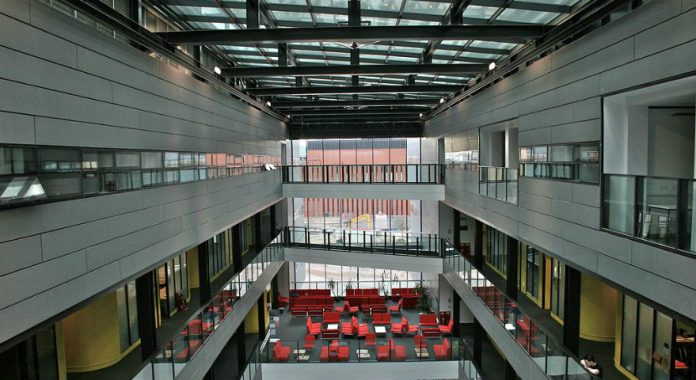Growing awareness of the need for energy efficiency is prompting households to look for ways to reduce consumption and universities are no different. Sue Holmes describes what higher education institutions are doing to work towards carbon reduction and energy efficiency.
Householders and businesses across the globe are aware of anticipated increases in utility consumption, our increased desire for electronic items and, of course, the increasing cost of receiving these services.
We are constantly reminded about the challenges posed by global warming and in the higher education sector, we too are acutely aware of the need to significantly reduce our carbon footprint, revenue expenditure and improve management of running costs whilst continuing to meet student expectations.
Expecting more
As a sector, we have the added challenge of exacting targets for reducing our carbon emissions from a 2005 base level. The retrospective baseline target introduced in 2010 was for a 43% reduction by 2020. Those targets were more achievable in the early years as estates invested in the low hanging fruit, but has become more challenging, especially given the increase in space efficiency which drives up usage and consumption.
HE estates struggle with the challenges of sustainability decisions on a daily basis, from running costs and building use to investment decisions and legislative compliance. The latest AUDE annual statistics report shows as a sector we exceed 26 million square metres of space and with more than 247,000 university owned bed spaces and a further 100,000 third party provided bed spaces, utility consumption and carbon emission optimisation looms large in daily decisions.
With a sector turnover of £27.3bn we are large and complex businesses. Specialist research space has been increasing and much of the research continues to consume significant increases in utility consumption. We can’t research on big data or green energies without significant increases in plant and equipment.
Weather dependent
Energy costs for the sector now exceed £400m per annum – a factor of increased demand, increased unit costs and harder working premises. Whilst energy cost have increased to £20m2, consumption has been relatively static across the past 10 years at 300kwh/m2. Utility consumption, as we all know, is also weather dependent, with warm periods over winter and cold snaps in the traditional summer period all affecting overall demand.
Carbon emissions have reduced by both full time equivalent and m2 from a peak in 2008, highlighting both increases in student numbers as well as some rationalisation of the estate.
This points to the ongoing work to improve energy efficiency in multiple ways the HE sector has invested. We have more controlled and well managed building management systems than 10 years ago, smarter technology and integrated system management. This includes features such as presence or absence detection and control and improved plant and thermal envelopes.
Smart investment decisions
We are also producing more reliable data and using it to make smart investment decisions and higher education is now more likely to invest in new technologies and designs from renewable energies, self-generation and passivhaus to net positive impact plans.
The sector continues to be committed to meeting targets and looking at varied options – it will drive change and share good practice to allow us all to improve utility consumption and help us to meet our carbon reduction targets.
Sue Holmes is director of estates at Oxford Brookes University and chair elect of the Association of Directors of Estates (AUDE)








